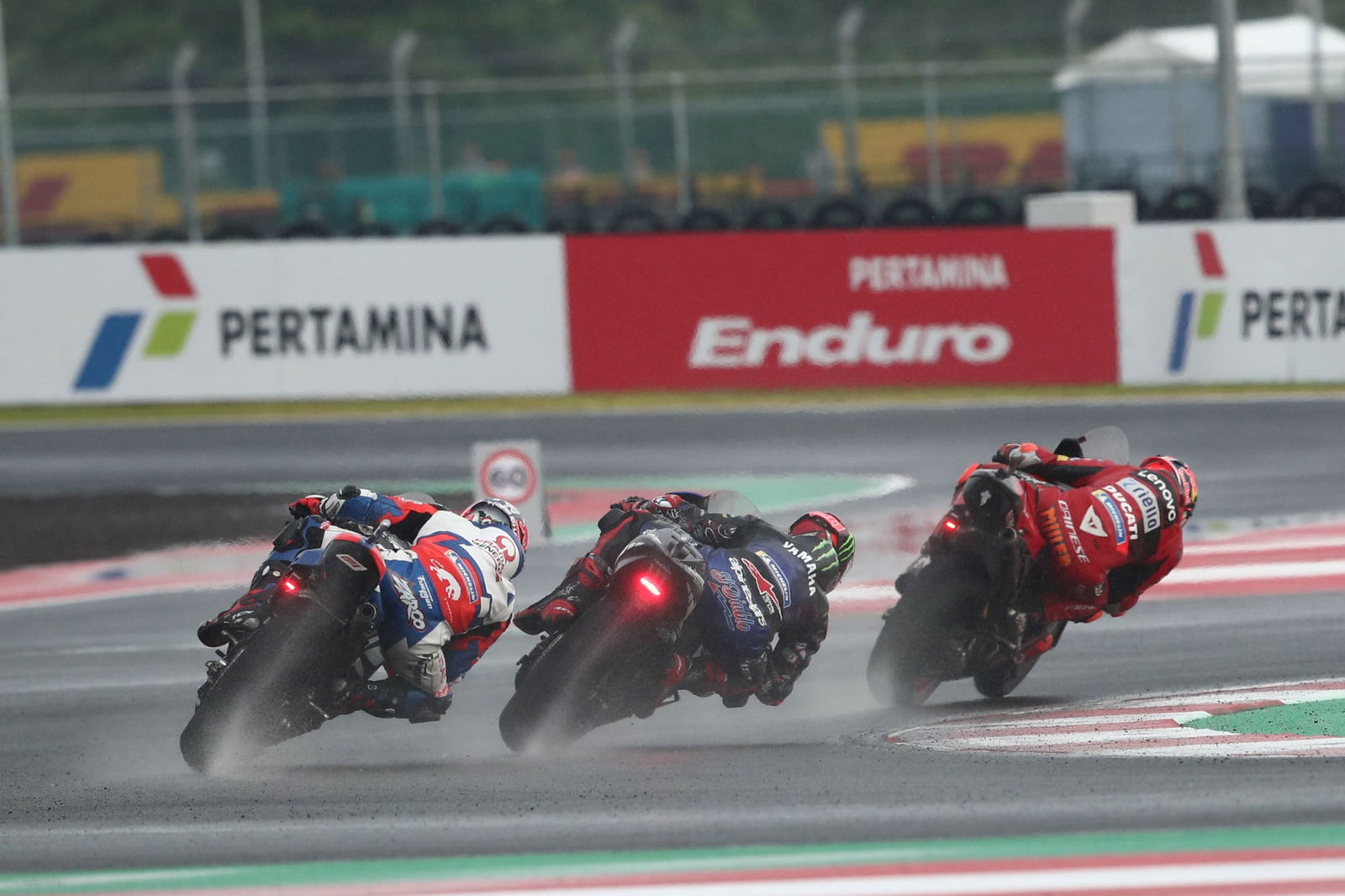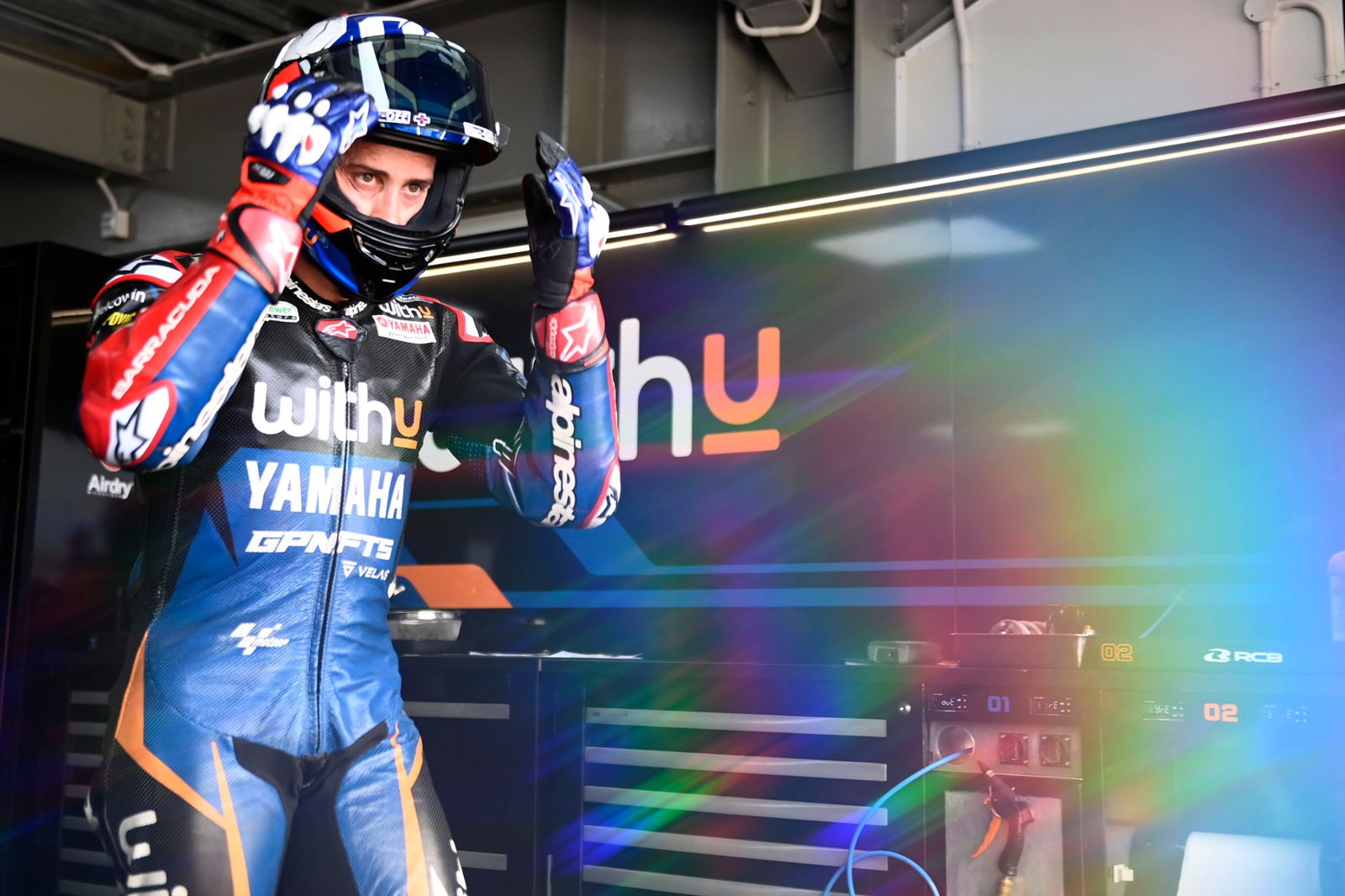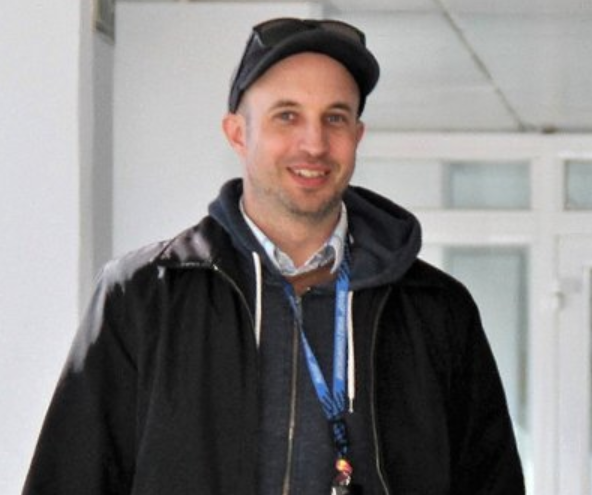Indonesian MotoGP: 'Stones in my leathers', Mandalika to be resurfaced again?

Concerns over the asphalt - partially resurfaced after breaking up during February's pre-season test - meant the Moto2 and MotoGP race distances were suddenly slashed.
But with 'holes' being dug at the final corner by the end of the Moto2 race, there were real doubts over whether MotoGP could even complete its shortened 20-laps in the dry.
"I don't know [if we could have raced in the dry] because the track condition was so, so difficult," said Suzuki's Alex Rins. "In the last corner, the tarmac was starting to come out.
"Even in the wet we felt the asphalt hitting our body from the rider in front, so imagine in dry conditions. Luckily, nobody got hurt.
"When I took off my leathers after the race, I had my chest full of black stones.
"They need to fix it, because it's a bit dangerous… Let's see. They say that they will resurface [for next year]. All of the circuit."
Team-mate Joan Mir added: "The problem with the asphalt was more for dry conditions, but even in rain conditions you started to see some holes at the end of the lap, the last corner. Imagine in the dry? Woah. It would be hard… It would be a challenge to complete the race.
"For us it was also a surprise when they reduced the laps, I inly realised it was 20 laps during the Moto2 race like everyone else. It was because of the last corner. The tarmac had holes.
"The resurfacing [for next year] is really important."
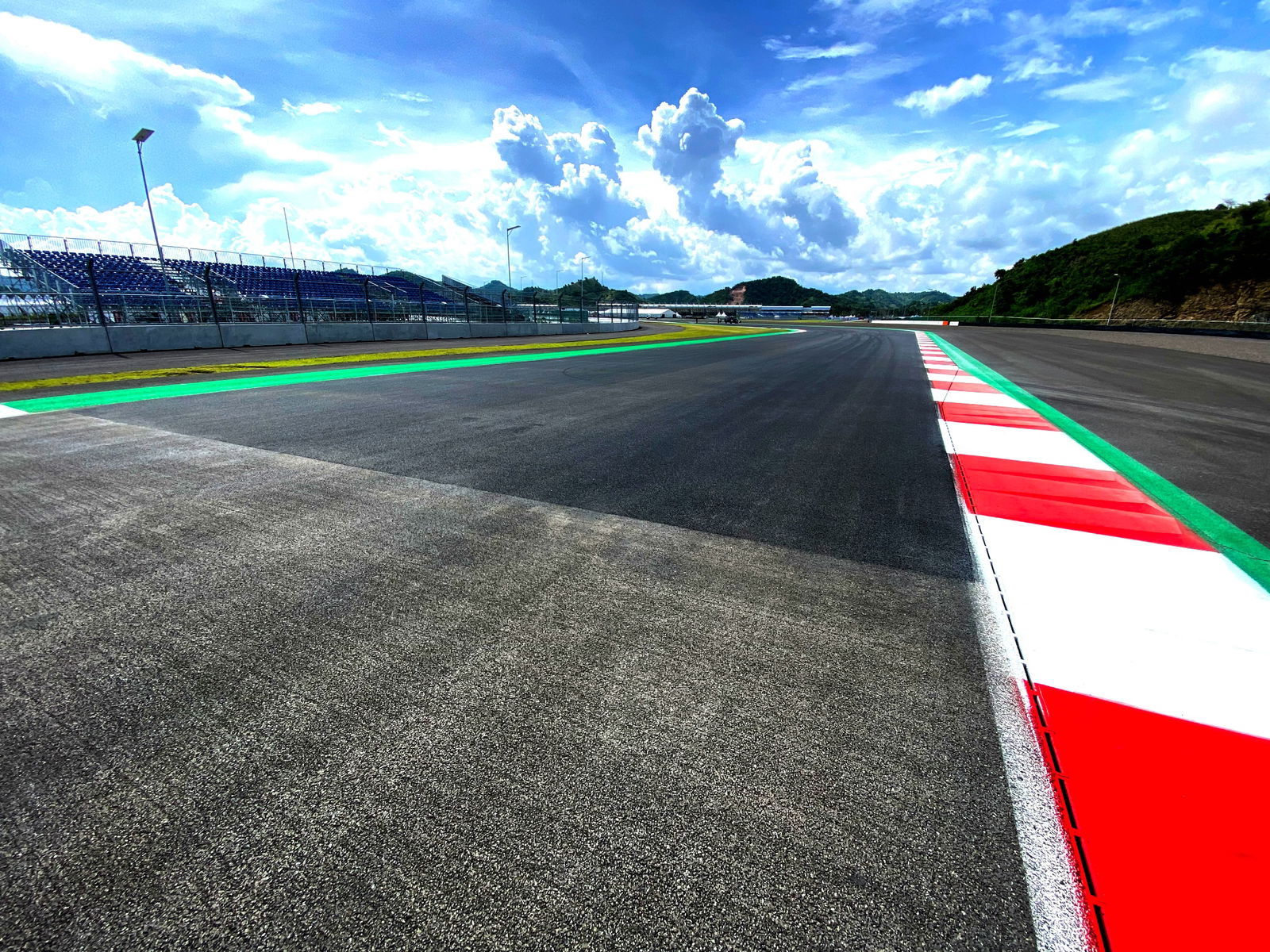
Jack Miller said it wasn't a surprise that such fresh tarmac was suffering, but is sure that the race would have gone ahead even in the dry.
"I could see why they shortened it," he said of the 20-laps. "Where the asphalt had been copping a hiding all weekend, you crank it over right on the apex there and it was… The asphalt was only finished last weekend. Generally, it needs a month or two to set in.
"I think under the circumstances the race would have happened no problem and I'm sure it would have been fine. We had a grand prix and better not to look at the negative side but the positive, that we had a great day's racing and got to give the fans a show here and I think they were all pretty happy."
But if the Sunday afternoon rain ultimately saved the race, it didn't look that way at first due to the scale of the downpour.
WorldSBK had been forced to cancel one of its races due to a similar storm last November and, with the Indonesian president looking on, there was a real risk that the country's first MotoGP race since 1997 might not go ahead.
"I didn't want to go home without the race done but when I saw all the rain falling on the tarmac I was thinking, put away the leathers and go home, because Monday was difficult to make a [rescheduled] race because of the flights and cargo," said Rins.
A local 'rain handler' was even despatched to try and banish the clouds and, against most predictions, the rain eventually cleared and puddles sufficiently drained for the premier-class grid to form one hour after the planned start.
"Luckily the rain stopped, the girl with the bell worked!" said Rins.
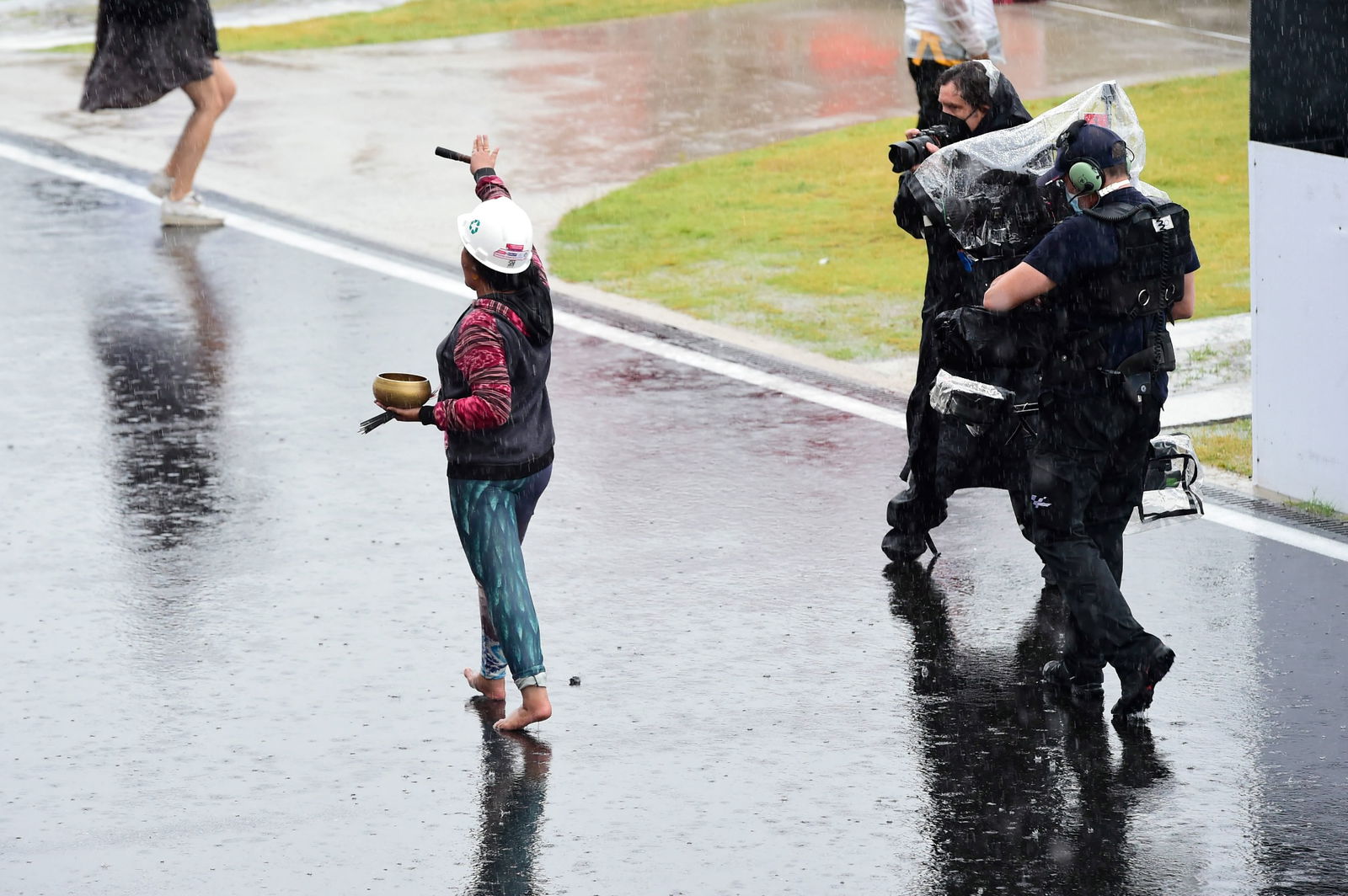
While there were serious concerns about the asphalt in the dry, performance was transformed in the wet.
"In wet conditions the track is unbelievable," said Mir. "I was touching with my elbows in every corner. And I said, 'this is wet?!' Unbelievable grip on track and also the Michelin tyres work really well in the wet. In the wet I also think we would have been able to make the full 27 laps."
"I felt like the grip was insane in some places," agreed KTM's Brad Binder.
But that didn’t mean conditions were easy. The sheer volume of water on track, mixed with the dirt and dust, meant major visibility issues.
"It was tough out there because the visibility was zero, basically," said Franco Morbidelli, who started from 14th. "Luckily the track was quite grippy. So that was a good surprise. I still got hit by a couple of stones, but it was much much worse in the test."
Starting even further behind was Mir, who took a leap of faith as he charged from 17th to eighth on the opening lap.
"[Visibility] was really bad. A disaster. On the first laps a MotoGP bike sprays a lot of water. So imagine when you have 16 bikes in front of you. It's really difficult. You are not able to see.
"It’s only because of the rain light that you are able to see the bike in front. Sometimes I was just following the [white] line, but you don’t know where the corner is exactly," he added.
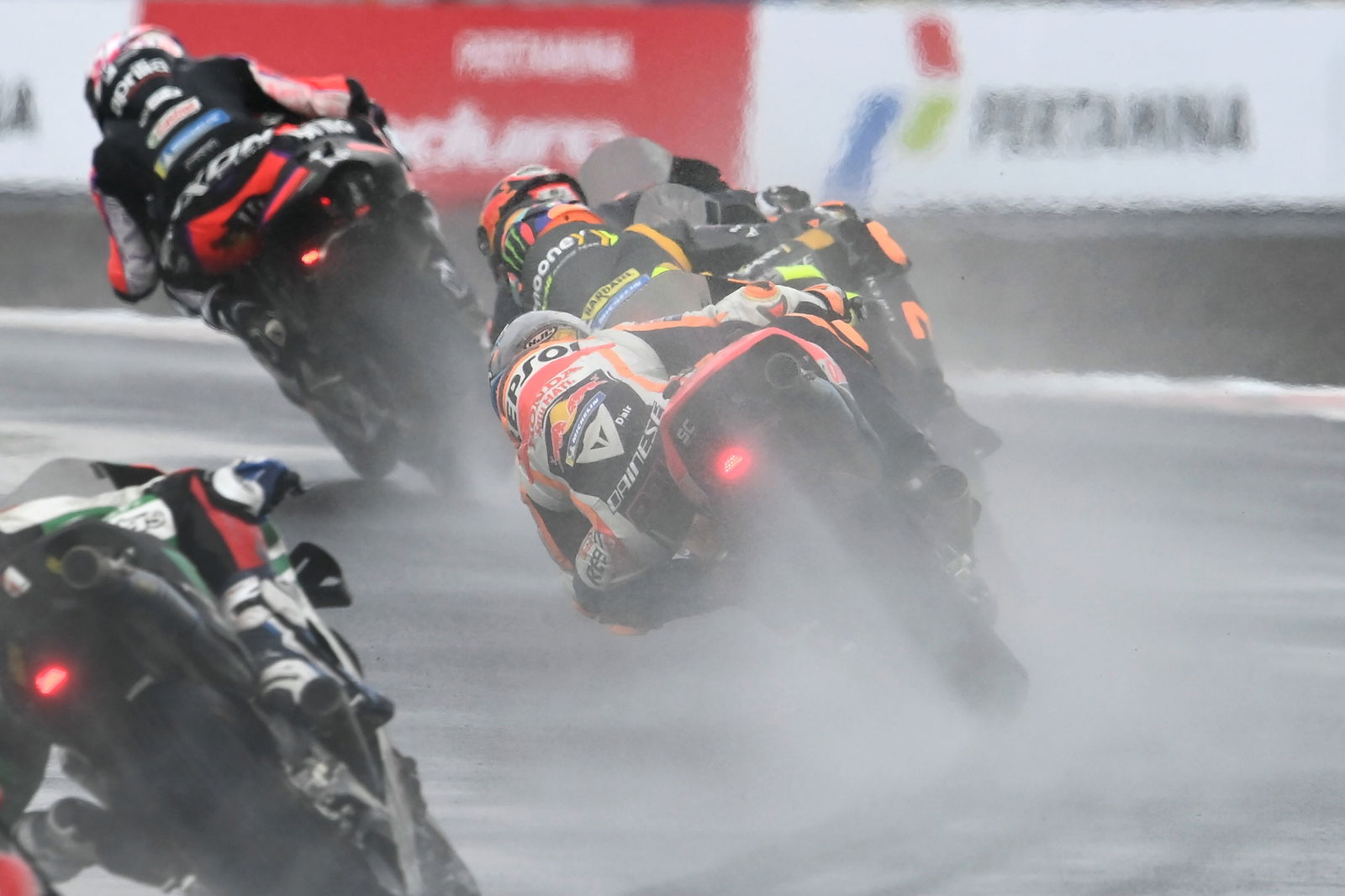
The lack of vision was also why Pol Espargaro was seen in a scary sideways moment after mounting the kerb out of the final corner.
"I didn’t know I was on the kerb until I almost crashed. It was a nightmare. I couldn’t see anything. It was a survival race because it so difficult to know where you were on the track and so much water," he said.
"Starting from so far back on the grid [15th], I took so much dirt from the others. The visor was so dirty and I couldn’t be fast," added the Repsol Honda rider, who eventually finished in twelfth pace.. "I lost vision. I think I touched Pecco twice today. It was not intentional. It was super, super-tricky.
"Yes, the track was grippy but it was also really dirty so it kind of balanced out. Normally we calculate around 10 seconds [slower in the wet than the dry] for a track with good grip in the wet and we were 9-10 seconds slower. Which is good.
"But we, or I, ended up with my eyes full of dust or small stones."
Team manager Alberto Puig later felt that a possible issue with Espargaro's helmet might have contributed to the problem.
“It looks like he could not see properly and I think he will check this situation with his helmet company," Puig said. "With such a massive amount of water from being in a group of four or five riders, if you can’t see, you have no chance."
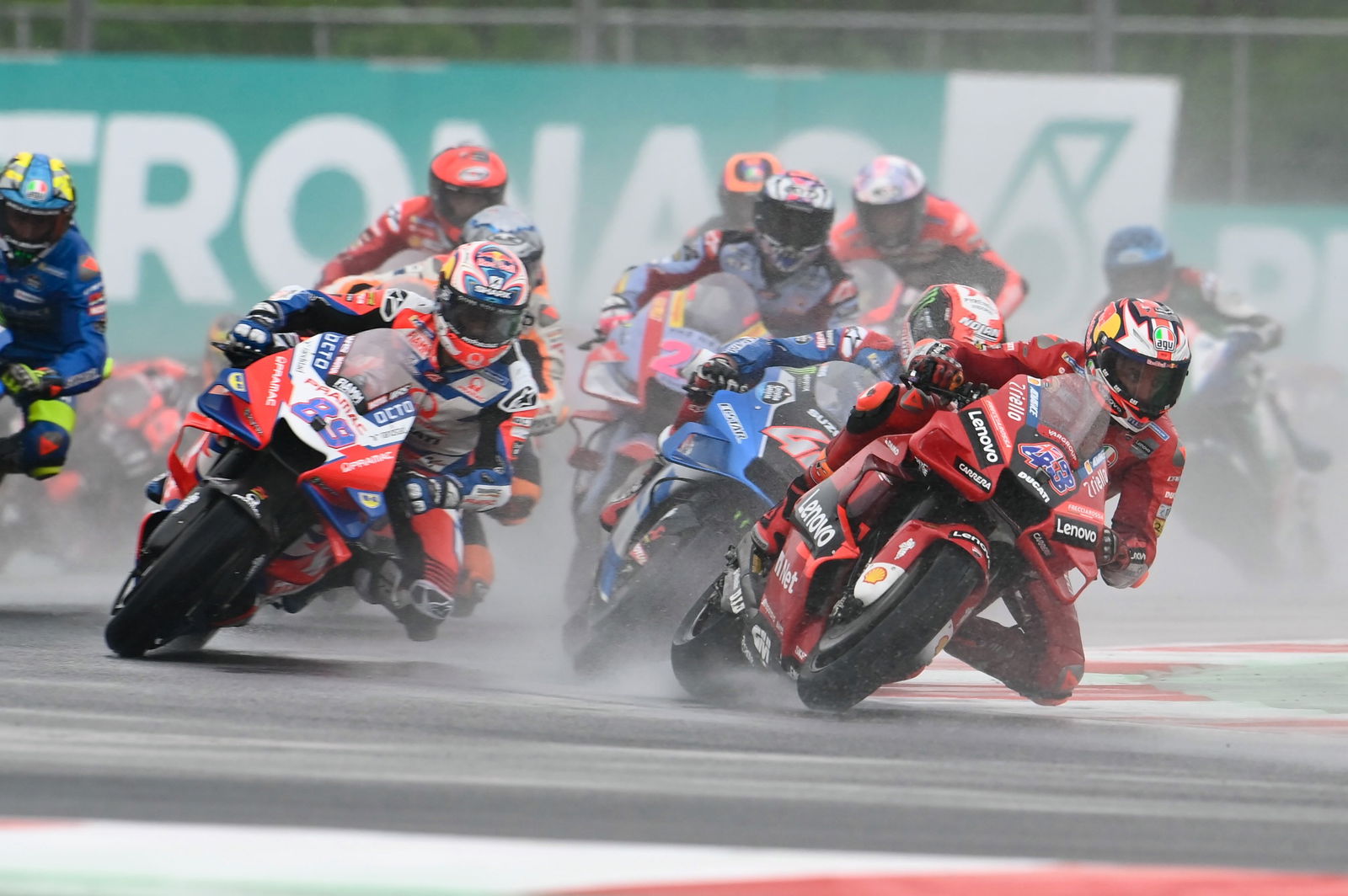
Under such circumstances being at the front of the field is a major advantage.
Leading the field by lap 2 was Ducati's Miller, who had surged forwards from ninth on the grid. But even the Australian resorted to wiping his visor with his hand.
"I was drenched after the sighting lap. The spray that came up was ridiculous! It's a lot of water. You feel like you are standing in front of a hose Then visibility wasn't great throughout the whole race because the dirt on the track sticks to everything," said Miller, who eventually finished in fourth place.
"The windscreen of the bike was useless pretty much. I was having to keep my head up and look over it. Maybe eight laps to go I had to finally wipe the visor with my hand, just to try and clear it up. Normally you don’t want to touch it too much because it creates sticking points for more stuff to get stuck.
"But at the end of the day it's racing in the wet, so it's never going to be perfect or 100% safe or whatever. We managed."
While the weather gods saved the Indonesian MotoGP race on this occasion, will it be a case of third time lucky for the resurfacing?
